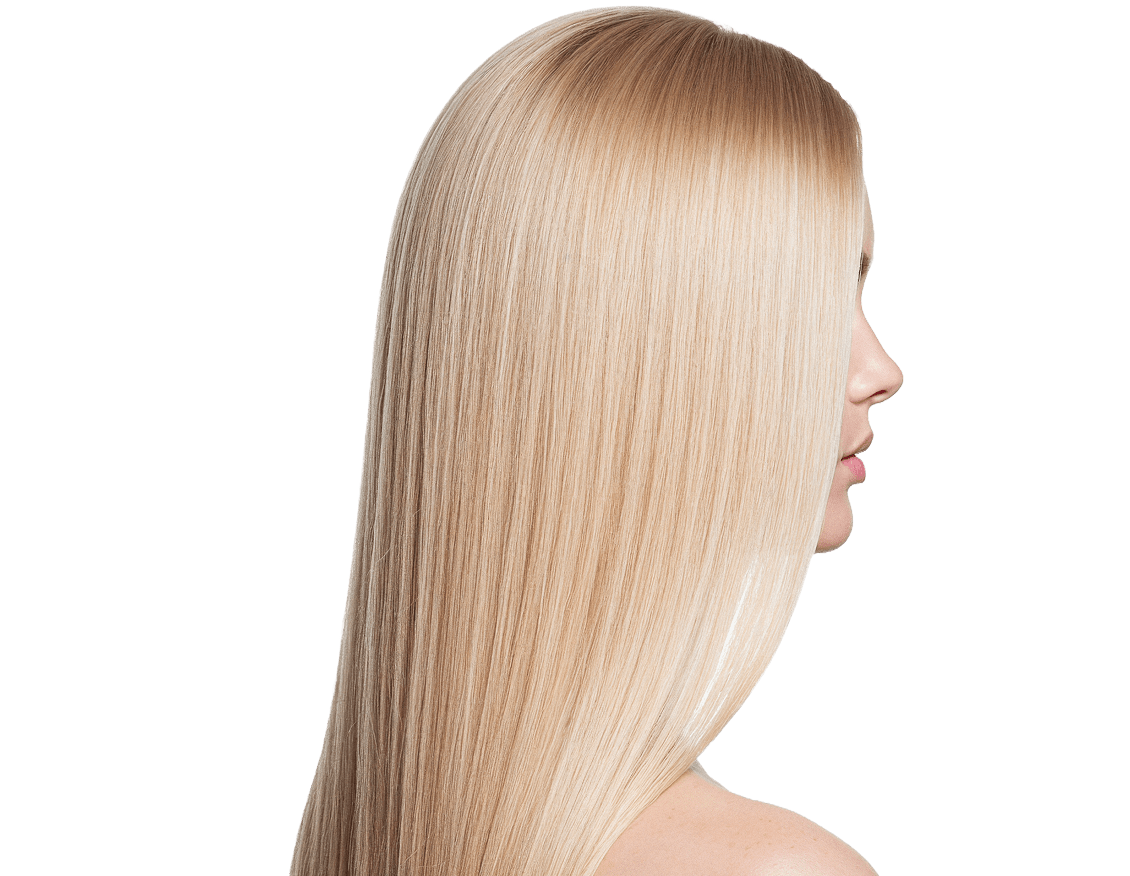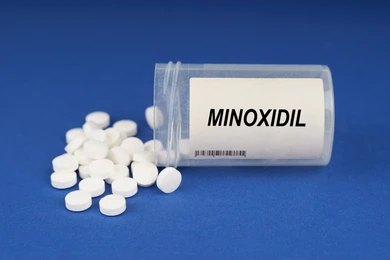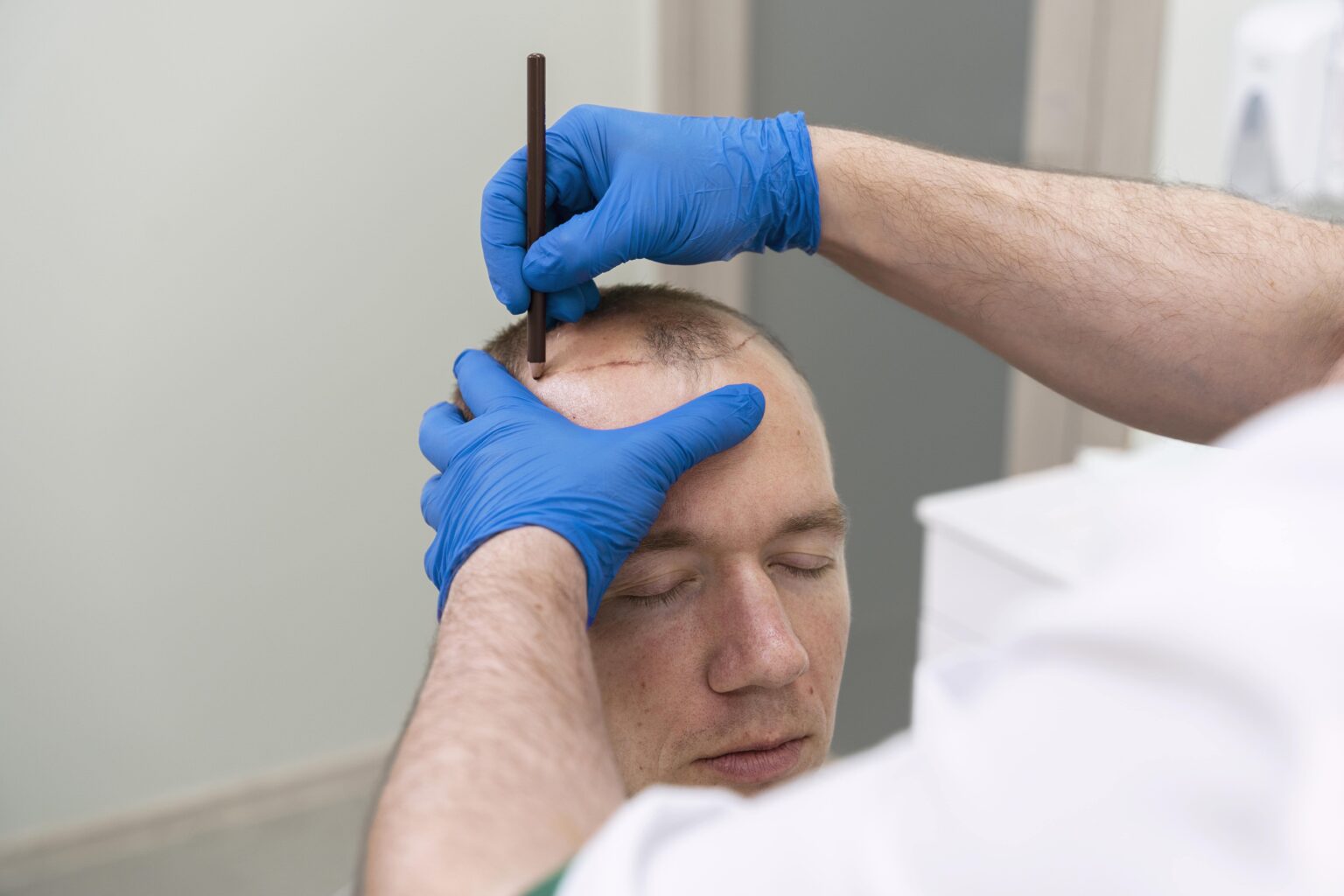Minoxidil


What is Minoxidil?
Minoxidil is a popular medication used to treat hair loss. It’s available in topical and oral forms, but Minoxidil topical solution is by far the most popular. Topical Minoxidil is applied directly to your scalp and can be used twice a day every day. It’s licensed for use in two strengths: Minoxidil 2% and Minoxidil 5%.
Minoxidil also comes in a third strength – Minoxidil 10%. However, this is not approved by the FDA (US Food and Drug Administration) or MHRA (UK Medicines and Healthcare Products Regulatory Agency)
Minoxidil is the second most recommended hair loss treatment by hair loss specialists, with 53% saying they always or often recommend it to their patients. Minoxidil is generally well-tolerated and has minimal side effects. So if you’re looking for the right hair loss treatment for you, Minoxidil is an excellent option.
Minoxidil is most commonly found under the brand names Rogaine or Regaine. But you can also find off-brand versions that are normally cheaper.
How does Minoxidil work?
At the moment, there’s a lack of evidence to pin down exactly how Minoxidil works to increase hair growth. But one prominent theory is that applying Minoxidil regularly allows more blood to flow to the scalp, providing follicles with more nutrients and oxygen.
Minoxidil belongs to a family of medications known as vasodilators, which are designed to widen your blood vessels. By improving the blood flow, Minoxidil is thought to encourage the flow of nutrients to your hair follicles. This can stimulate them to enter the growth phase of the hair growth cycle.
Minoxidil was actually discovered by accident after the medicine was given to severe refractory hypertension patients in the 1970s. It was only after these patients started to see abnormal hair growth around their bodies that experts realised Minoxidil could be an effective remedy to treat male pattern baldness and other forms of hair loss.
Types of Minoxidil
- Foam
- Solution (spray or dropper)
- Minoxidil shampoo
- Oral tablets
Does Minoxidil work for men and women?
Unlike some other hair loss treatments, Minoxidil can be used by both men and women. Finasteride and Dutasteride, which are hormone-blockers, can cause negative reactions in women. However, because Minoxidil is a topical treatment that doesn’t alter hormones, it’s perfectly safe for women who are experiencing hair loss to use.
In a 2004 study, 381 women aged 18-49 with female pattern hair loss compared the efficacy and safety of 5% topical minoxidil with 2% topical minoxidil and placebo. After 48 weeks, it was found that 5% topical minoxidil was superior, and could improve psychological perceptions of hair loss in participants.
Women’s hair loss is often much more complicated than men’s hair loss. There are many potential causes, so it’s important to get an accurate diagnosis with female hair loss blood tests. These can help you determine whether Minoxidil or another female hair loss treatment is best for you.
Does Minoxidil work for facial hair?
Minoxidil shows some very promising results for those who are also struggling to grow facial hair. There is evidence to suggest that Minoxidil can also stimulate hair growth for beards and moustaches.
One study discovered the effectiveness of Minoxidil for beard hair in a 16-week randomised, placebo-controlled trial of 48 men aged between 20 and 60 years. Participants were instructed to apply 0.5 ml of 3% Minoxidil to their chin and jawline twice daily. The hair count for men in the Minoxidil group was significantly higher than those using a placebo solution.
Other studies have also detailed the application of Minoxidil for eyebrows. In one particular study, it was found that Minoxidil 2% lotion was effective at promoting eyebrow hair growth.
What dosage do I need?
Minoxidil is available in two concentrations: 2% and 5%. Regaine sells 5% foams and solutions in its men’s range, while both concentrations are available in its range for women.
The 5% dosage is generally more effective, but it’s also associated with a higher risk of side effects [13]. Many people start at a lower concentration. If you don’t see the results you want after a few months, you can try a higher dose.
Adults should apply 1ml (spray or solution) or half a capful (foam) to their balding areas twice a day. Children should apply Minoxidil in line with their doctor’s guidance. Don’t double up if you miss a dose. Instead, just continue using it, as usual, the following day.
If you’re unsure which dose is most appropriate for you, speak to a hair loss specialist for advice.


How long does it take Minoxidil to work?
For most people, it will take around eight weeks before you start to notice any improvements after using Minoxidil. It will only be after the four-month mark that you’ll experience the real results, as long as you’ve kept up with consistent use.
If you want to benefit from the full results of taking Minoxidil, it’s important that you take the treatment as instructed in the product’s guidelines. In most cases, this means using 1ml of the solution twice daily (although some people are advised to use Minoxidil once a day to reduce the risk of unwanted side effects).
You may be tempted to use more than the recommended dosage, but we’d strongly recommend against doing this. It will not help to encourage hair to grow quicker and could instead cause a range of side effects like skin irritation.
Minoxidil side effects: is Minoxidil safe?
Minoxidil is a generally well-tolerated hair loss treatment with a good safety profile. However, some Minoxidil users do report side effects. These include:
- Skin/scalp irritation
- Rashes
- Itchy scalp caused by Minoxidil
- Allergic contact dermatitis
- Localised or generalised hypertrichosis (although this is most commonly observed when patients take oral Minoxidil, which is not normally used for hair loss)
- Minoxidil hair shedding
- Changes in hair colour
These Minoxidil side effects will normally go away after the first few weeks of use. If you notice that your side effects don’t clear up, or you’re having a severe reaction or allergic reaction, it’s best to speak to your GP.
Learn about the safety of oral Minoxidil if you’re planning to take Minoxidil tablets.
Concerned about the sexual side effects of Minoxidil? Fortunately Minoxidil is one of the safer hair loss drugs, as it doesn’t impact your hormones.
What are the alternatives to Minoxidil?
Minoxidil is an effective treatment to counteract the first signs of hair loss and balding. However, it’s not a cure for baldness.
If you’ve found that Minoxidil has not worked for you, there are several alternatives to Minoxidil for hair loss, including:
- Finasteride
- Dutasteride
- Caffeine shampoos
- Steroid creams
Each of these Minoxidil alternatives is designed to treat a different condition. So it’s best to get advice from a hair loss specialist if you’re unsure which treatment to try.
If Minoxidil doesn’t work, an FUE hair transplant or FUT hair transplant might be a viable option. At the Wimpole Clinic, we specialise in both of these surgical procedures. However, a hair transplant can’t protect you from continuing hair loss. In these cases, Minoxidil can help prevent ongoing hair loss and help you maintain hair density for longer.
Book a hair loss consultation with Dr Ditta Hair Transplants Clinics
To learn more about Minoxidil or discuss your hair loss treatment options, get in touch with the team at the Wimpole Clinic.
